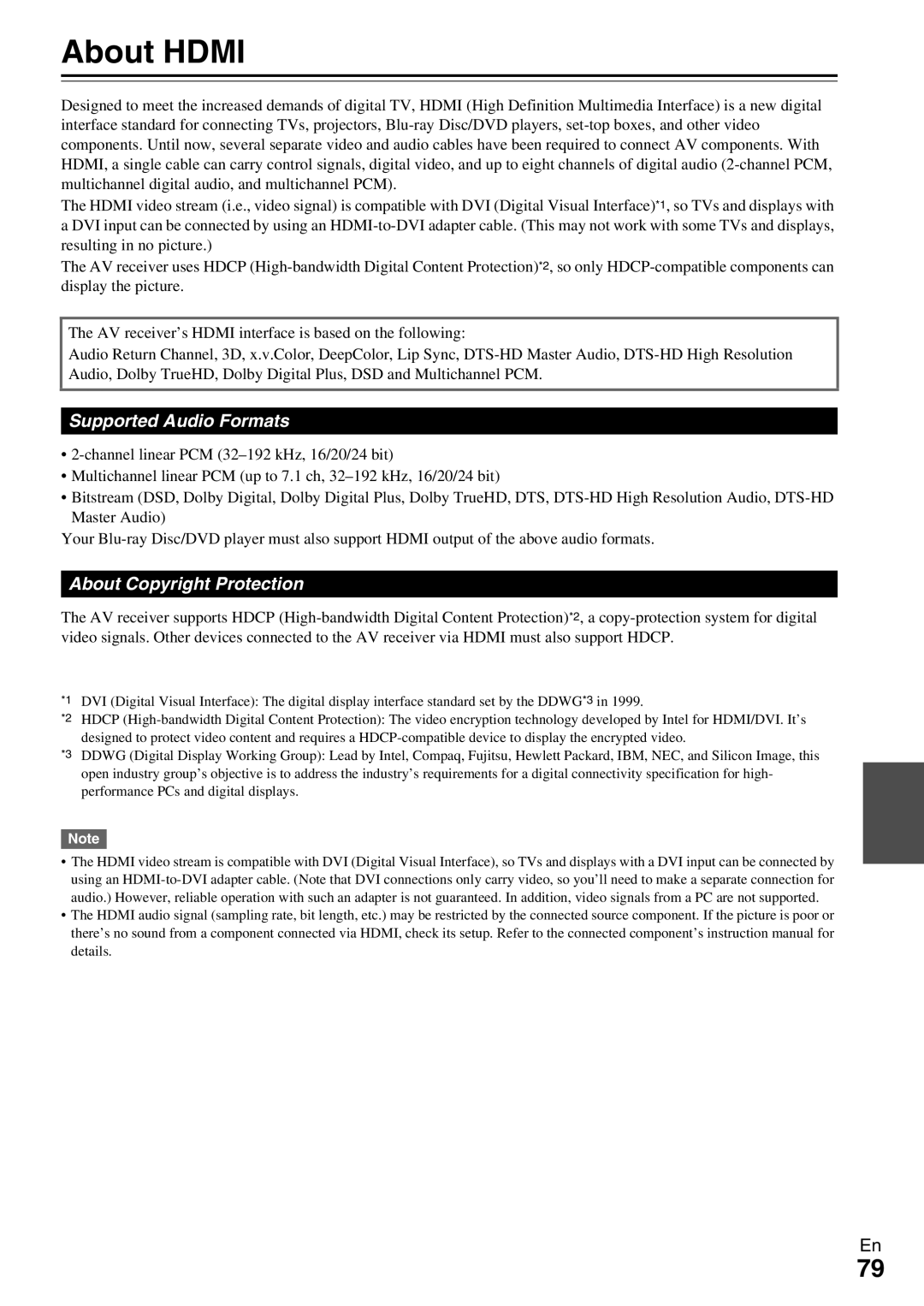TX-NR579 specifications
The Onkyo TX-NR579 is a versatile and powerful AV receiver that caters to both home theater enthusiasts and casual listeners alike. This model distills advanced audio technologies while maintaining user-friendly features that enhance the overall entertainment experience.One of the standout features of the TX-NR579 is its support for 7.2-channel output, allowing users to connect various speakers to create a rich, immersive surround sound setup. With a robust power output of 100 watts per channel, this receiver can drive a range of speakers with ease, ensuring clear and dynamic sound reproduction across a variety of media types.
The TX-NR579 incorporates advanced audio technologies such as Dolby TrueHD and DTS-HD Master Audio, ensuring that users experience studio-grade sound quality for their movies and music. In addition, the receiver supports a variety of audio formats, allowing for seamless playback of different media sources.
Another notable feature is the inclusion of 4K Ultra HD video pass-through with HDR support. This enables users to enjoy stunning picture quality and vibrant colors when paired with compatible devices. With multiple HDMI inputs, the TX-NR579 accommodates various sources such as Blu-ray players, gaming consoles, and streaming devices, making it a central hub for home entertainment.
The receiver is equipped with Onkyo's AccuEQ room acoustics calibration system, which analyzes the sound environment and optimizes audio playback for the specific room. This ensures that users get the best possible sound experience tailored to their listening space.
For connectivity, the TX-NR579 offers built-in Wi-Fi and Bluetooth capabilities, allowing for easy streaming from smartphones, tablets, and other devices. Users can take advantage of popular services like Spotify and Pandora directly through the receiver, adding a convenient way to access music.
With its intuitive user interface and remote control compatibility, the TX-NR579 is designed for easy navigation and operation. Whether setting up a movie night or enjoying a music session, this receiver stands as a versatile solution for elevating home entertainment.
In summary, the Onkyo TX-NR579 combines powerful audio performance with advanced features, making it an ideal choice for both serious audiophiles and those looking to enhance their home cinema experience. Its exceptional sound quality, 4K support, and user-friendly design position it as a reliable addition to any home theater setup.

